Printed concrete
Post from EditorialsOutdoor flooring and vertical surfaces with textures that mimic the specific nature and its many forms, through the use of printed concrete.
Printed concrete for exterior surfaces
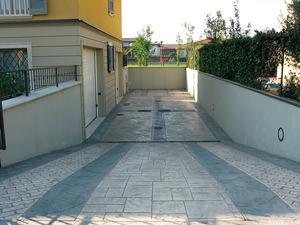 Concrete is a widely used material in the construction world.
Concrete is a widely used material in the construction world.
It has great versatility and ease of use; over the years and the advancement of technology, it was also influenced by a number of aspects that have made it a decorative material for flooring and finishes.
One of the solutions to recreate natural forms, such as rock and stone outdoor, is the use of printed concrete. Also used on large dimensions, this solution can be suitable both for gardens, for pathways, pedestrian routes, in public and private spaces.
Features of printed concrete
 Among the main characteristics of the printed concrete, surely we find the little maintenance, both of the surface and of the substrate on which we go to lay it, but also the annulment of weed growth between the cracks of a classical flooring composed with self-locking or tile.
Among the main characteristics of the printed concrete, surely we find the little maintenance, both of the surface and of the substrate on which we go to lay it, but also the annulment of weed growth between the cracks of a classical flooring composed with self-locking or tile.
All this is done with special techniques that transform the concrete in different ways than the usual, depending on the need. Thanks to a series of molding processes, the concrete takes on unusual decorative looks, with special texture that can play many natural and valuable effects.
Benefits of printed concrete
The advantages of printed concrete are:
- Ease of processing
- Reduced time
- Cost reduction of construction site
- Possibility of curved or irregular surfaces
- Durability. 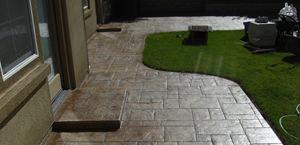 This latter aspect is particularly important, since, thanks to the final finishes of surfaces in printed concrete, made with a special resin, the surface is more durable and does not change its appearance over time, even if exposed to atmospheric agents.
This latter aspect is particularly important, since, thanks to the final finishes of surfaces in printed concrete, made with a special resin, the surface is more durable and does not change its appearance over time, even if exposed to atmospheric agents.
Furthermore, the printed concrete is not affected by changes in temperature and has large resistance to loads, for which is indicated both in outdoor use on garage ramps or paths of passage, that for interior such as roof boxes and garages.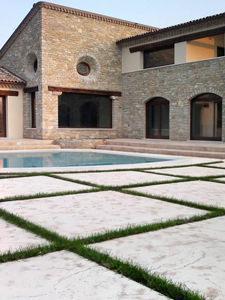 Particularly suitable for situations in harsh climates or near the sea, where salt may damage traditional surfaces or speed their degradation and wear.
Particularly suitable for situations in harsh climates or near the sea, where salt may damage traditional surfaces or speed their degradation and wear.
The traditional flooring with porphyry slates and other similar materials, have a great aesthetic value but must be combined with appropriate mortars, that do not make the pieces continuous, being only a filler.
In this way, the infiltration of water and germination below, can often cause the formation of mold, shrinkage and growth of weeds between the cracks.
With the use of printed concrete is able instead to obtain monolithic flooring, colored and decorative.
Manufacturing of printed concrete
The printed concrete allows to obtain a series of surface processing; in the order:
- trowel with special machine;
- Dusting of the surface with silica and suitable dyes;
- Application of beating molds on the design of your choice;
- Application of transparent acrylic resin, after drying, which penetrates into the floor giving anti freeze characteristics, anti-moss and waterproof.
Printed concrete for vertical surfaces
Printed concrete walls
The printed concrete, in addition to the application for floors, can also be used for vertical surfaces.
It is generally used as a solution to imitate natural stones, which today have lost the structural aspect, to take only the aesthetic.
In the field of building there are no solutions for vertical walls that use a series of products able to recreate Classic texture, using mortar and cement base.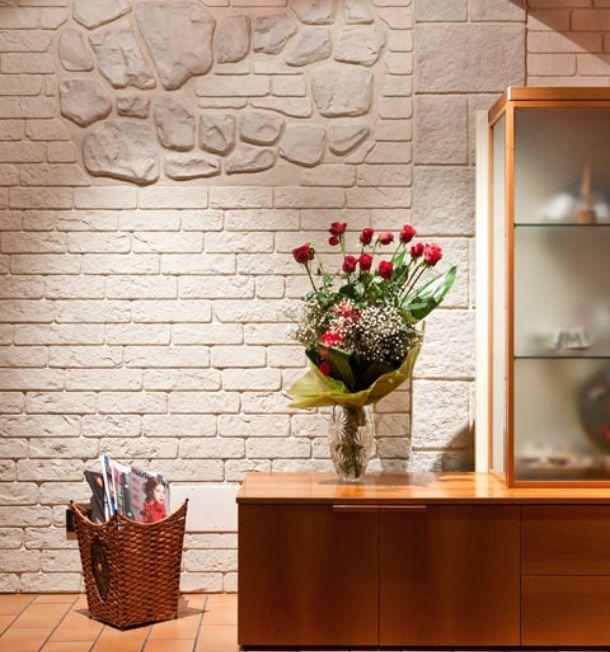
The molding technique is performed on a particular mortar which can also be previously colored, with shades chosen, even before being printed.
In this case the products that act are: additives, dyes, cement, release agents for molds used and a series of protective finish, to make stable and enduring the obtained finish.
As for the price, this kind of solutions are much more affordable, while getting vertical decorative coatings of high quality.
Solutions as Muro Latino by Cemento Stampato or products by Ideal Work can reach very high aesthetic standards, not only for the walls but also for columns, panels, stairs or purely decorative elements for the home, with a high theatrical impact.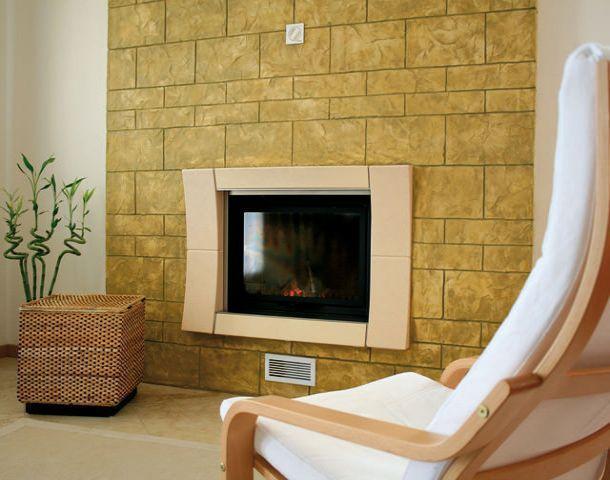
The composition of these solutions in printed concrete starts from a compound of selected sands, Portland cement, inorganic oxides resistant to UV and special additives to enhance processing, water resistance and adhesion of the layer you will draw.
Interesting effects you can get with this amazing material: from ancient brick to stone, from the tufa rock, from wood to slabs of gneiss.
79734 REGISTERED USERS










